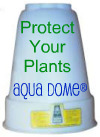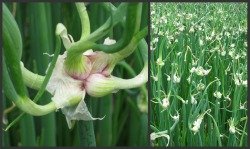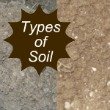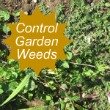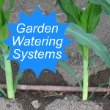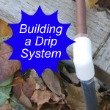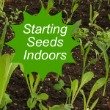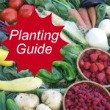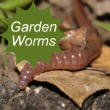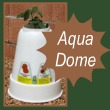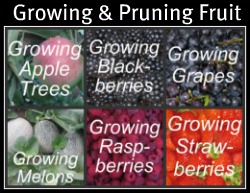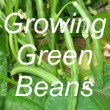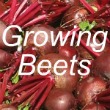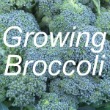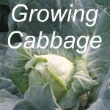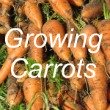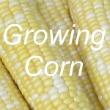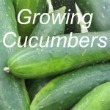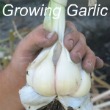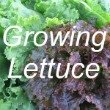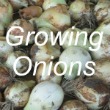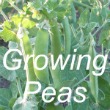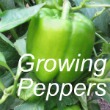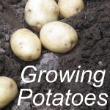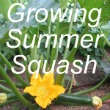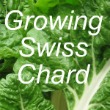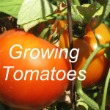|
Growing Peppers
Learning how to grow peppers successfully is relatively easy to do. Growing peppers thrive during the hot summer and are very sensitive to frost. Peppers have a wide variety of colors, shapes, and tastes. 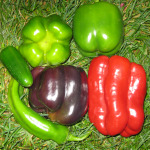
One little trick that promotes growth and production in your pepper plants is to place tinfoil around the base of the plants. This helps the pepper plants benefit from the direct and reflective heat and light of the sun. Of course, if you live in an area that doesn’t get cold and has a long growing season, you can start them outside. Soil preparation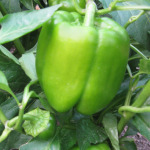
The soil preparation for peppers is the same as it for tomatoes – See Soil Preparation on the growing tomatoes page. The only difference between tomatoes and peppers is that you use a mixture of (12-12-12) or (16-16-16) as the inorganic fertilizer. There are equal amounts of nitrogen, phosphate, and potash in the mixture. It’s important to apply adequate phosphate for healthy fruit (pepper) development. Starting Pepper Seedlings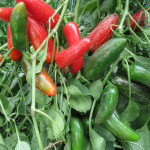
Starting peppers is very similar to starting tomatoes, cabbage, broccoli, kohlrabi, etc. – See Growing Tomato Seedlings. When using potting soil, plant the pepper seeds in a row. It usually takes about 14 days for pepper seeds to germinate. Be sure you keep the new seeds and soil warm so that they'll germinate well. You can use "heating mats for germinating seeds" to help keep the soil warm. The clear plastic cover that goes over the black plastic tray also helps to keep the heat and moisture in the soil. 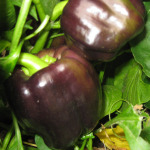
An alternate method to using potting soil is using Jiffy starting plugs. They are made out of a peat moss growing mixture. You can plant single seeds in each one of these plugs. I prefer to plant 2 seeds just in case one doesn't germinate. You can remove the weaker of the two pepper seedlings if they both germinate. As the plants grow you may want to transplant them into a larger pot until you plant your growing peppers out in the garden. Be sure to have adequate grow lights or direct sunlight. This helps prevent the plants from reaching for light and becoming spindly. Transplanting Pepper Plants into the Garden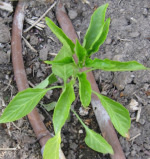
Plant your pepper seedlings out in the garden after the last frost date. Frost will kill your new growing peppers. See 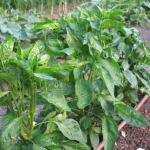
Vegetable Planting Guide. You can also use a wall of water. They are cheaper, but don't last as long. Here's an idea to help stabilize your wall of water: Cut out the bottom of a 5 gallon bucket and turn it up-side-down. Put the wall of water around a bucket.
The little plants need to be planted in a row about 16 inches apart. This spacing allows for proper development of the growing plants as they get big and start producing large peppers. Water the plants so that they stay moist. I have found when the weather gets hot, watering the growing peppers with a drip system for 4-6 hours every 3-4 days is about right. See Garden Watering Systems Harvesting Peppers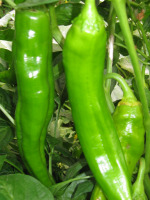
You can pick the peppers when you think they are large enough to eat. Peppers don’t have an exact picking timing like many of the other vegetables. Oft times the green bell peppers turn red as they mature. You harvest peppers about the same time as tomatoes and cucumbers. This comes in handy when it comes to using your peppers for canning. They can be used in salsa and relishes. There are many varieties of peppers to choose. You can choose anything from a hot jalapeno or cayenne pepper to a sweet bell pepper. The sweet peppers come in a variety of colors. Plant many different types of peppers and enjoy their nutritious flavor. You can cut up your peppers and freeze them, and you can use these peppers to flavor your food all winter long. (Freezing Peppers Link coming) Return To:Gardening Vegetables from Growing Peppers |





